Supplementary Material 1

![Figure 2: Range shift relative to initial mean annual temperature for the boreal (dark green) and temperate-mixed (orange) states. Range shift was computed for all values of occupancy [0-1] by calculating the difference between initial state distribution (T_0), and the final distribution of a simulation. The panels in the first row show the range shift in function of occupancy for the median output of the T_{150}CC + FM simulation (Figure 5). The panels in the second and third row test whether filtering extreme occupancy values have an effect on the range shift summary.](manuscript/img/sim-result_supp5.png)
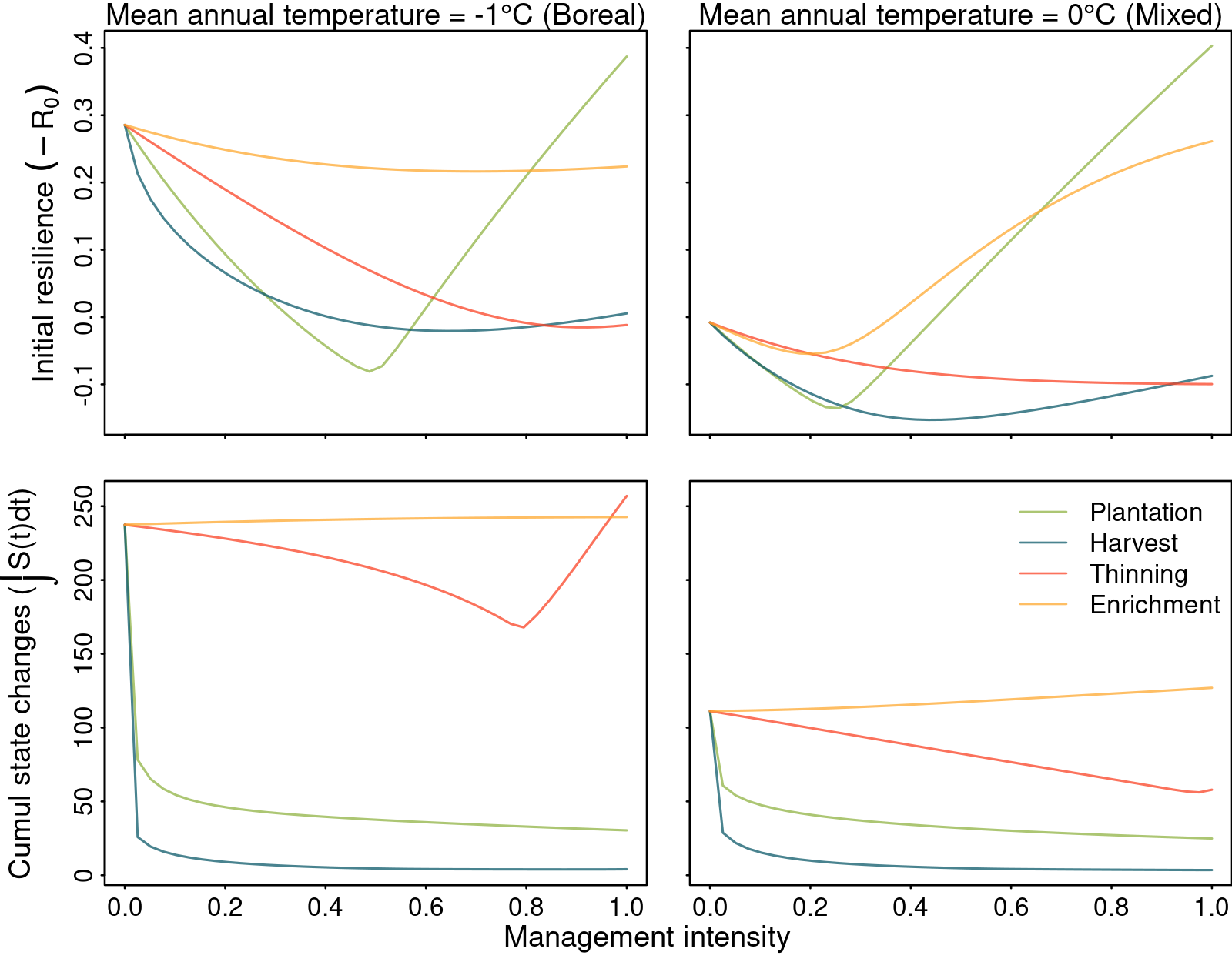
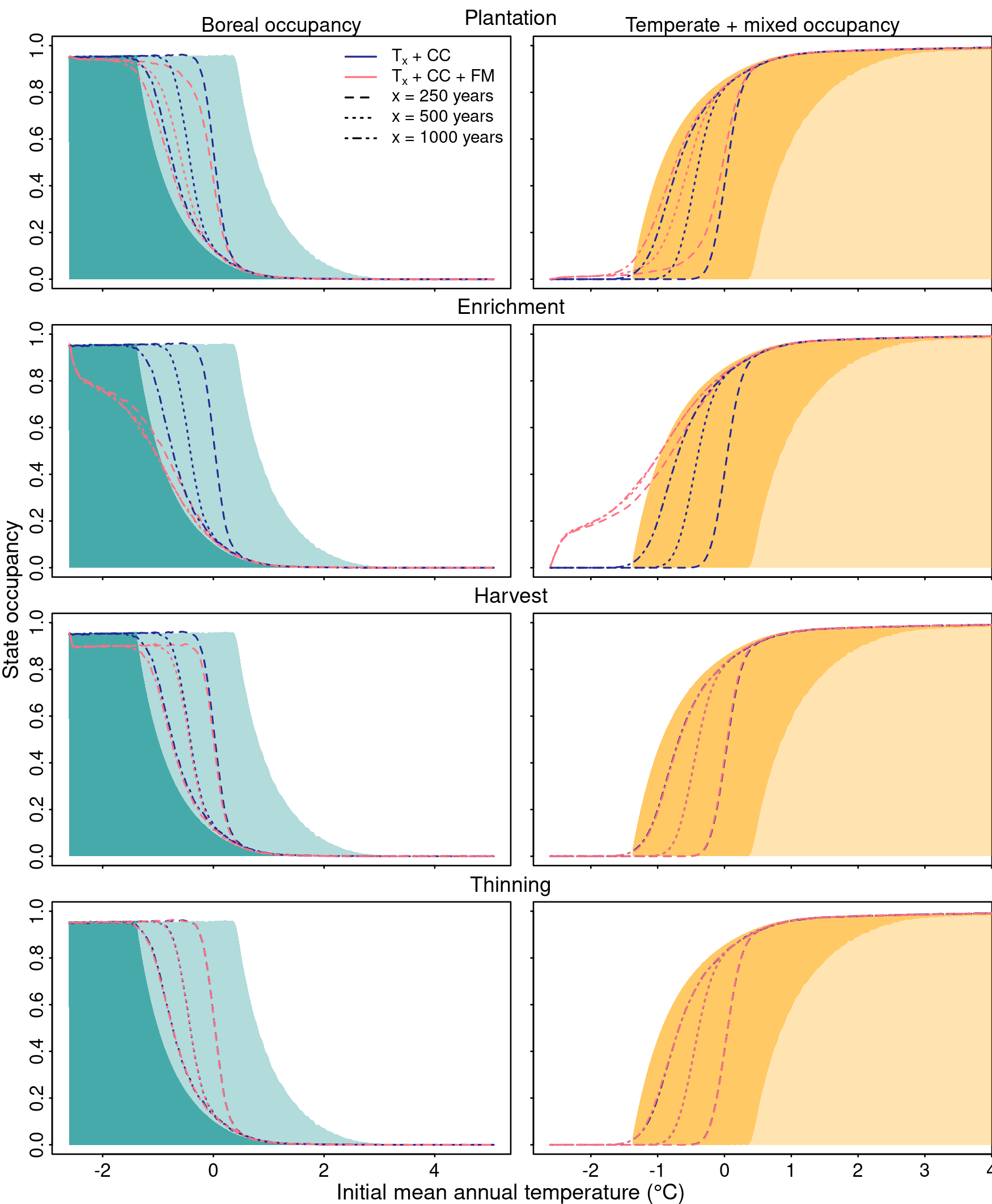
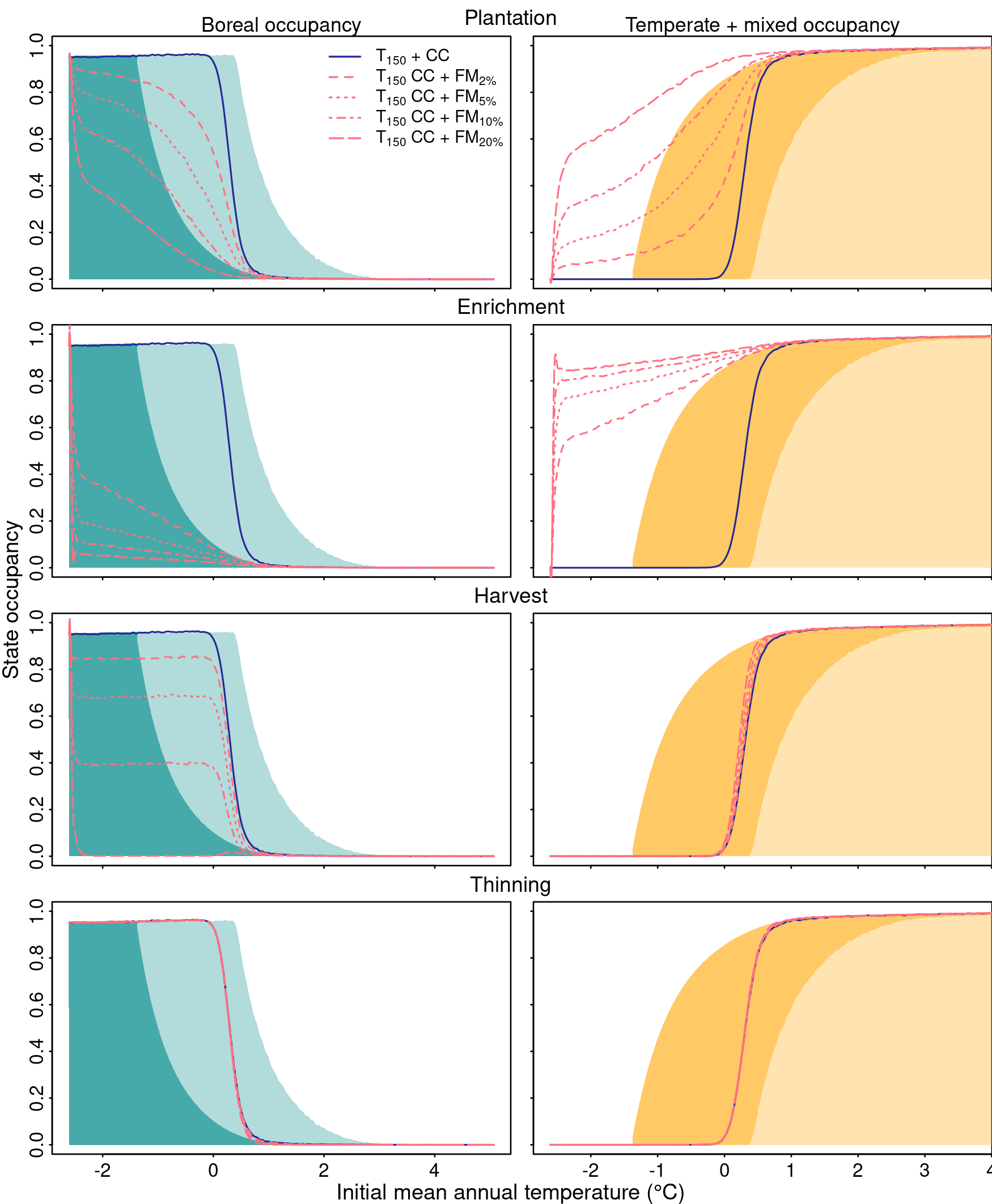
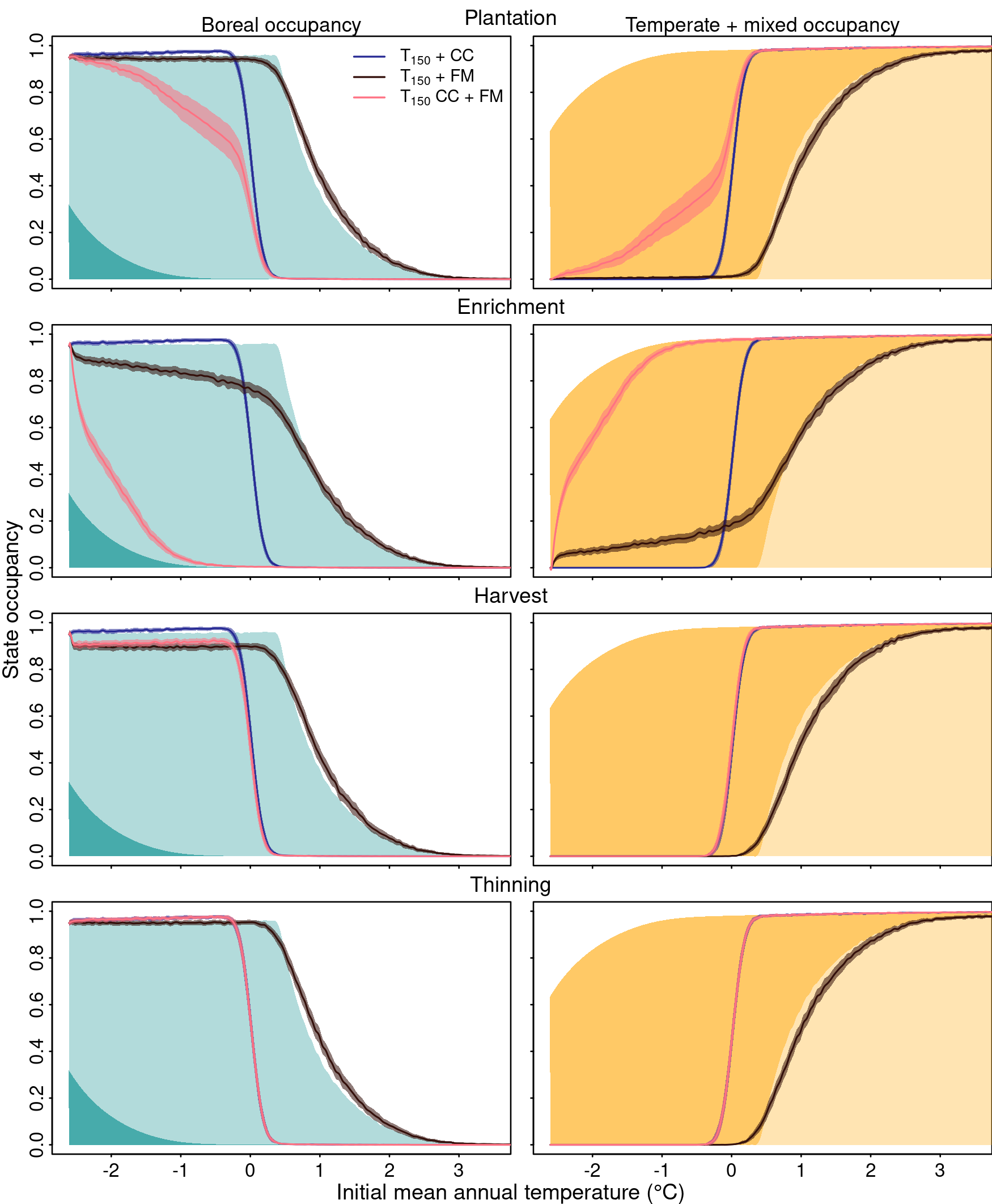
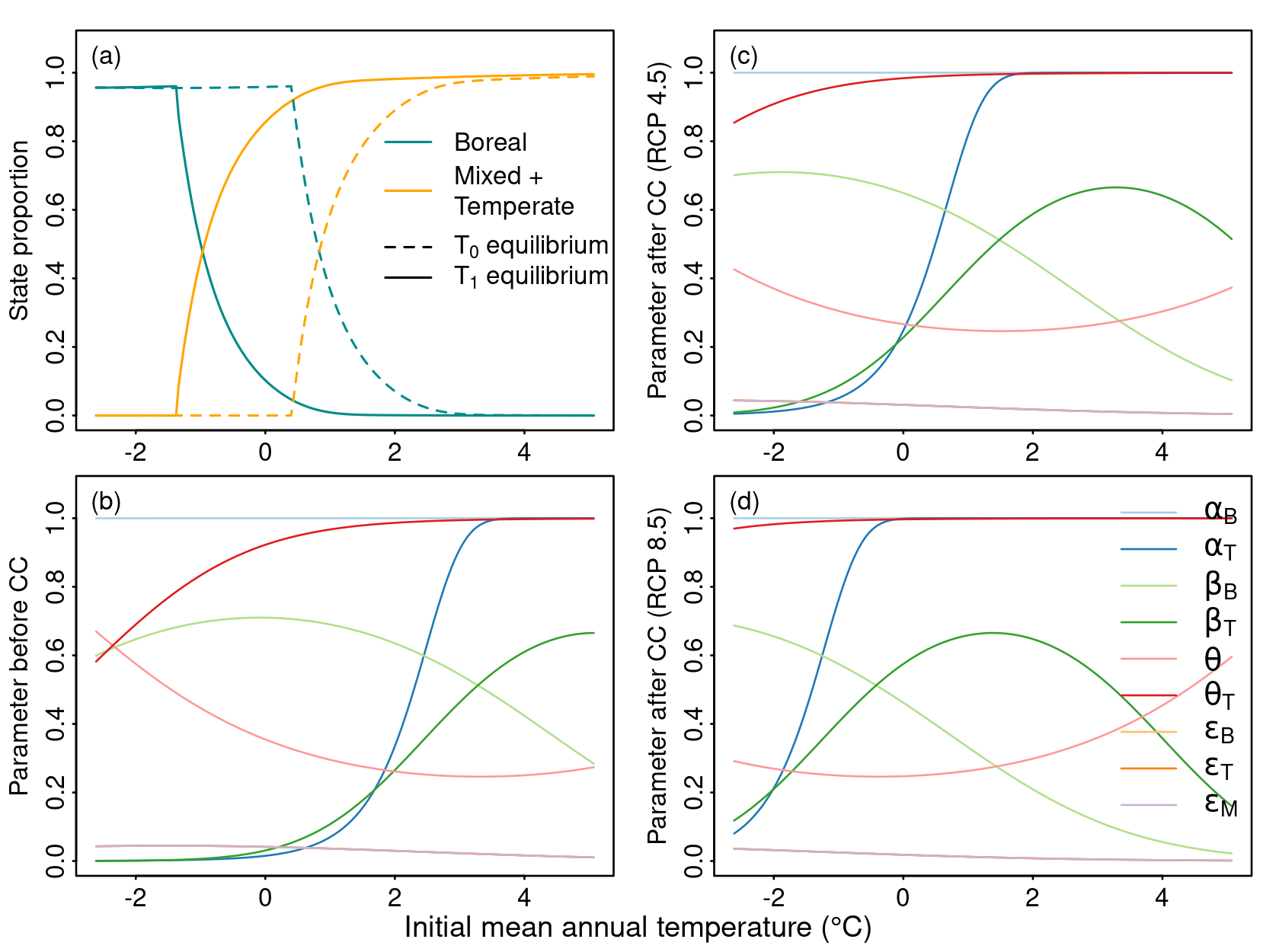
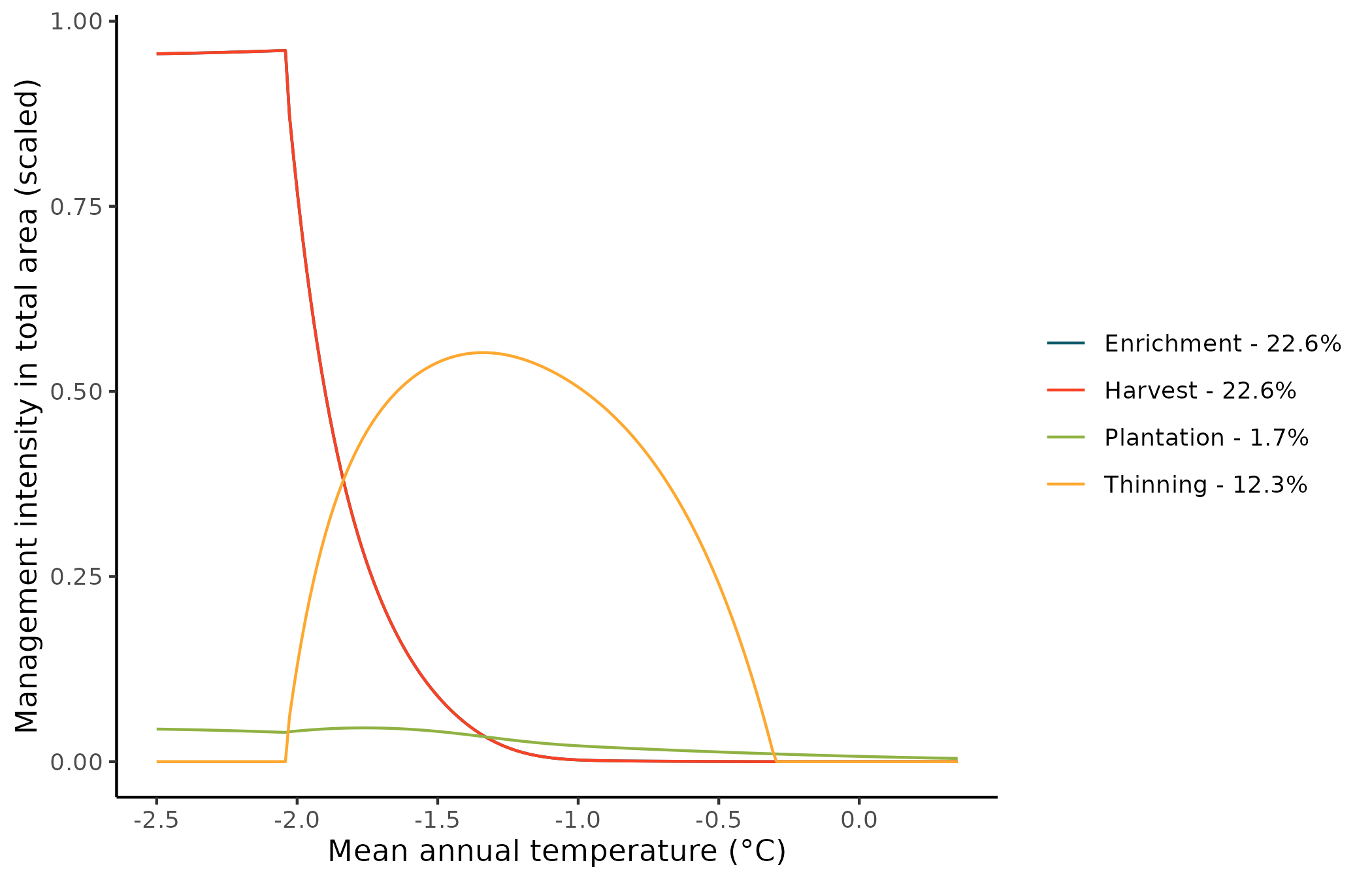
References
Vissault, Steve, Matthew V Talluto, Isabelle Boulangeat, and Dominique Gravel. 2020. “Slow demography and limited dispersal constrain the expansion of north-eastern temperate forests under climate change.” Journal of Biogeography 47 (12): 2645–56. https://doi.org/10.1111/jbi.13978.